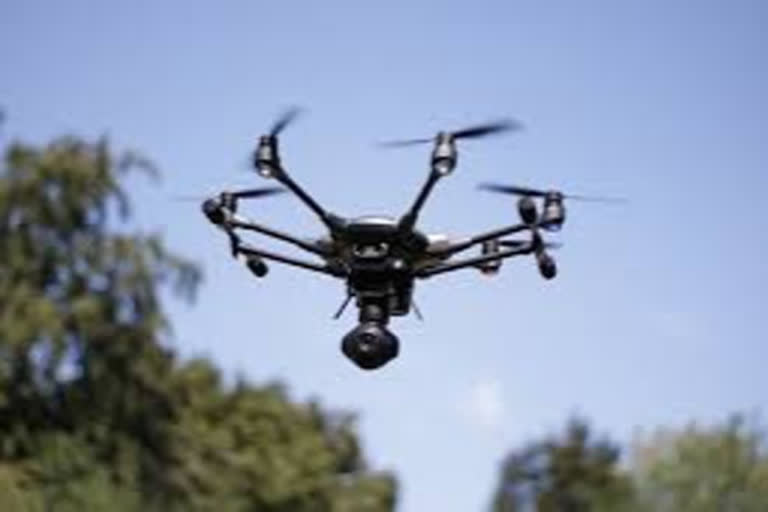Hyderabad: The COVID-19, a global pandemic make us rethink how governments, organizations, and societies around the world can work with minimum or without physical contact. Today, the front line warriors and heroes of the nation are doctors, medical staff, local police, and private security guards and refuse collectors.
Technologies like Artificial Intelligence, Big Data, GIS and Mapping, Location Technology and autonomous machines are playing a growing role in responding to COVID-19 pandemic. However, in this war against this invisible enemy, drones play a key role by helping authorities and people in different ways to prevent further spread of the corona virus outbreak.
Let’s look at how drones are being used effectively to combat COVID-19.The introduction of drones at this time of crisis is reducing the risk of getting infected to police officials and other staff since it enables monitoring vast swathe of area without physical engagement. However, the use of drones for surveillance raises a debate about privacy and individual rights on mainstream media as well as social media platforms.
Applications Details
Broadcast In addition to street surveillance, authorities are also using drones to broadcast messages and information about lockdown measures, especially an in rural area that lacks open communication channels for health information. Drones equipped with loudspeakers are used to make public announcements to keep people indoors, take necessary precautions, make social-distancing and wear a mask if stepping outside from home. China and many European countries are using drones for broadcasting messages to public.
Disinfectant Spraying
To disinfect public spaces and prevent the further spread of COVID-19, health authorities are deploying agriculture spray drones to carry out tasks like spraying disinfectant in potentially affected areas. These spraying drones are filled with disinfectants and can cover much more ground in less time and 50 times faster than traditional methods. According to DJI, the world’s largest drone maker company, a spraying UAV can carry around 16 Litre of disinfectant and cover 100,000 sq meter area in an hour.
Medicine and Grocery Deliveries
Doctors and hospitals need medical supplies and laboratory testing more than ever, and drones are the safest and fastest ways to deliver medical supplies and transport samples from hospitals to laboratories. In Wuhan, the epicenter of the pandemic, a drone is used to deliver medical supplies in the hospital. This technology not only speeds up delivery of essential medical supplies and samples but also reduces the risk of exposure to medical staff and making a major difference in efforts to combat the disease.
Temperature Check
During the peak of the epidemic in China, authorities were carrying out large-scale remote temperature measurement in most apartment complexes through the drones. Since people were worried of catching the infection, to avoid the face to face contact, Chinese authorities used drones equipped with infrared cameras to measure the temperature of people who was lock down in their houses.
Drone industry in India
• Drones in India have emerged as the go to technology partner when it comes to managing healthcare and identification in densely populated areas, sanitizing large areas with disinfectants, monitoring traffic and lockdown violators and aiding the fight against COVID-19 in the country.
• “The pandemic has shown what drones are capable of,” says Smit Shah, director of partnerships at the Drone Federation of India, an industry body with more than 1,000 members. “Earlier drones got a bad rap because they were seen as a threat to security and privacy. But now they are here to stay.”
• As per Shah’s estimates, India has about 50 drone manufacturers, 200 drone service organizations and nearly 5,000 drone pilots, currently operating in the commercial sector. The Indian drone industry is projected to touch nearly $900 million by 2021, according to a July 2018 report by FICCI- Ernst & Young,while the global market is projected at $25 billion.
• There are roughly 200,000 recreational and commercial drones in the country, each costing anywhere from Rs. 200,000 ($2,600) to Rs. 20 million ($26,000) depending on size and functionality. Before the pandemic, drones were deployed for a variety of tasks—from monitoring floods to spraying pesticides over fields, mosquito eradication, inspecting wind turbines and data acquisition for combating climate change.
Also Read:Tamil Nadu police deploy drones to monitor lock down
Drones in Maharashtra
In Maharashtra, the Government is using data analytics, drones and traditional patrolling methods to deal with containment in crowded places. Drones are also monitoring the movement on streets and if a congregation of people is witnessed in any area, police teams are sent to take action.
Enforcing social distancing in Mumbai, Smit Shah, Director of Partnerships at DFI, says surveillance is the most crucial role drones can play right now.
“Following a crowd-sourced surveillance model, DFI has identified around 50 drone pilots across Mumbai. Our team of pilots is working closely with the police to survey parts of the city and check whether people are following social-distancing norms.”
The pilots fly their drones for a couple of hours a day within an area of about 500m around their homes, looking for signs of people gathering. This footage is then uploaded on a dashboard with the time and location, which the Mumbai Police access from their control room and send out teams to disperse crowds accordingly.
